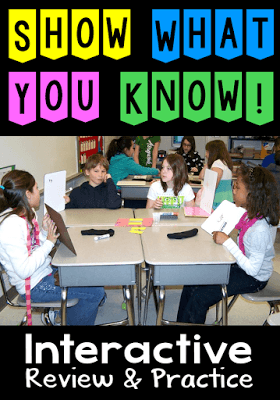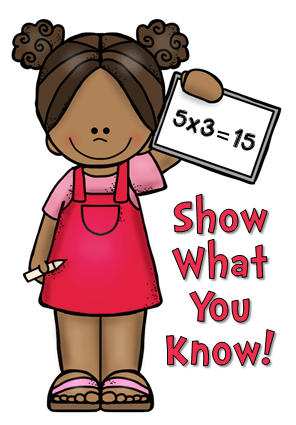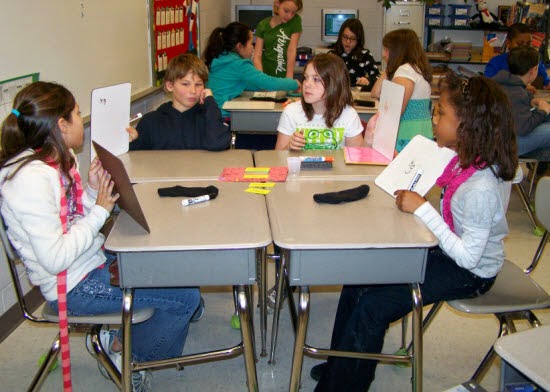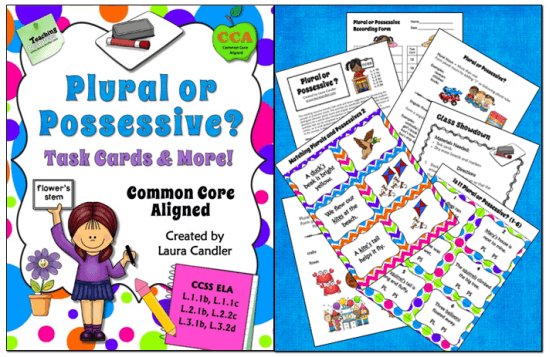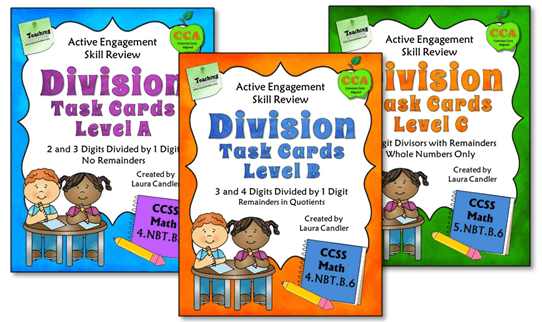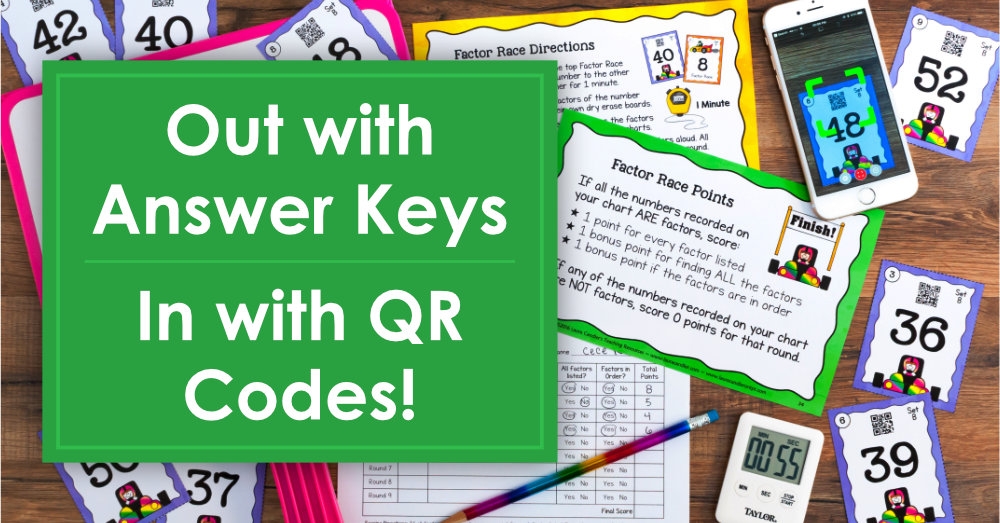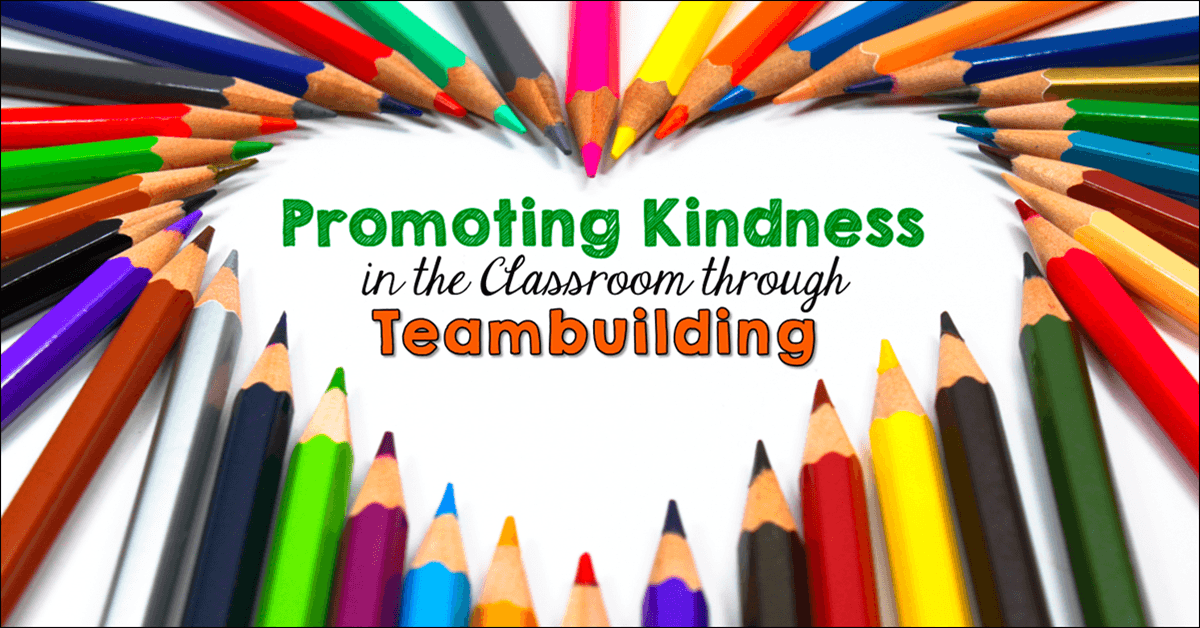What keeps cooperative learning from becoming chaotic? Structure, equal participation, and individual accountability! When all students are actively engaged, there’s no time for misbehavior and learning is multiplied!
Individual dry erase boards are essential if you want to foster active engagement. One of my favorite cooperative learning activities involving dry erase boards is “Showdown.” This strategy includes all of the elements that make cooperative learning lessons successful. It has a clear structure, students participate equally, and all team members are held individually accountable for their own work.
If you are a fan of Kagan Cooperative Learning you’ve probably heard of Showdown, but you might not know that I invented it! I developed this activity many years ago when I was writing Discovering Decimals Through Cooperative Learning. Having been thoroughly trained in Kagan strategies, I knew every structure inside and out. So I was baffled when a cooperative learning activity I was using in my classroom didn’t fit any of the structure descriptions. I contacted Dr. Kagan and explained the steps of the activity. After we talked it over, he agreed that it was a brand new cooperative learning structure! He named it Showdown, which was perfect! In this activity, students record responses on individual dry erase boards, and when the Leader says, “Showdown!” they all display their boards to “show what they know.”
Showdown Directions
Seat students in teams of three to five and give each person a dry erase board, eraser, and marker. You’ll also need a set of problem cards or task cards for each group. Designate who will be the first Leader in each team. The basic directions are outlined below; printable directions can be found in all of my Showdown freebies and products on TpT.
- Stack the problem cards face down in the center of the team. (If the cards have answers on the backs, place them face up).
- The Leader reads the first problem aloud and places the card face up in the center of the team.
- Without talking, everyone (including the Leader) writes the answer on his or her own dry erase board.
- All students place their dry erase boards face down when finished.
- The Leader says “Showdown!”
- Flip over dry erase boards and show answers. Check the answer by looking on the back of the card, using a key, or referring to another source like a textbook. Discuss answers that are different and celebrate correct answers.
- If everyone had the correct answer, remove the card from the deck. If not, place it at the bottom to repeat later.
- Rotate Leaders clockwise for each round. Repeat as time allows.
Cooperation – Not Competition!
Tips for Using Showdown
Showdown is a fast-paced, interactive, and fun way to review content and skills. However, it does have some limitations. Showdown is not designed for in-depth problem-solving or discussion; other cooperative learning strategies are more suited for critical and creative thinking.
Ready-to-Use Showdown Activities
Showdown is excellent for math practice, and you’ll find many free math task cards in my Math File Cabinet, including the Round and Compare Decimal Review Cards on the Decimal Files page. Just cut these cards apart, stack a set in the middle of each team, and you’re ready to go. Nothing fancy … but very effective!
Showdown is a great strategy for reviewing grammar skills, too. You’ll find many Showdown task cards in my Language Arts File Cabinet including free Quotation Mark Task Cards and Subject and Predicate Task Cards. On that page you’ll find a link to my newest Common Core Aligned product, Plural or Possessive? Task Cards and More! This complete digital resource includes lessons, tasks, cards and directions for Class Showdown as well as Team Showdown. Preview it online to see if it meets your needs. You can also download one or more sets of division task cards to use with Showdown.
Showdown Wrap Up
What do kids think of Showdown? They love it, of course! Technically it’s not a game because there’s no competition, but it’s exciting and fast-paced so it feels like a game. With Showdown, there are no losers … in fact, all students are winners because they are having fun while learning!

